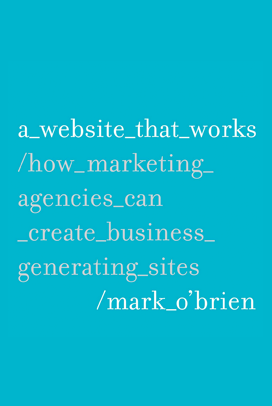A number of years ago, I read an article that said if the only call to action you have on your website is a link to your “contact us” page, then you have a website without any calls to action. That was one of those simple ideas that had an immediate and memorable effect on me. I realized at the time that my company’s website was guilty as charged. We did what so many sites, and agency sites in particular, still do today. We successfully attracted the right people to our site and informed and inspired them through our site content and case studies, but we left it at that, and, therefore, we missed out on the most important part of the process: engaging our visitors.
Within a few weeks of reading that article, Newfangled took drastic action. We added our three calls to action at the time (Subscribe to Our Newsletter, Register for Our Next Webinar, Get in Touch With Us) to the sidebar of every page of our site. That is all we changed. We did not add content; we did not tweak the SEO on the site; we did not drive any new people to our site through new marketing activities. Instead, we simply placed clear calls to action on every page of our site. This one change had a greater affect on our site’s lead-generation efficacy than any other single change we have ever made. Before the change, we received, on average, ten or so form signups per week, but afterwards, the signups jumped to an average of fifty to one hundred per week. With such a dramatic response, I finally understood the importance of calls to action.
Only when your site starts generating many high-quality form conversions does it truly begin working for you. At that point, it transforms from a brochure into a real marketing tool.
Let’s consider two different site experiences your prospect might have with your site, one with clear calls to action and one without.
Say a potential prospect searches for services like yours one day, and you have been writing newsletters for years on topics in which they are interested. Because of all the valuable content on your site, Google lists you on the first half of the first page for many competitive search terms related to your expertise, and your prospect clicks through one of those listings to your site. So far, so good, but here is where the paths diverge. In scenario A, your site has plenty of useful content, but the calls to action are buried and ineffective. In scenario B, you still have all that content, but each page also has relevant calls to action listed in the sidebar.
Scenario A
A prospect finds your site, reads through a few newsletters, and is inspired and impressed. They know they will be reviewing their agency website in six months, and they make a mental note to remember you and your valuable content at that time. Unfortunately, after those six months pass, they remember only that they saw a site that had some strong content on it, although they can no longer recall what the articles were specifically about or what the site address was. They even go so far as to go back to Google to search for what they remember of the content that so interested them, but, you never end up hearing from them.
Scenario B
The prospect goes through similar motions. They arrive at your site, read the article Google initially referred them to, and end up reading portions of a few more articles. After the third or fourth page view on your site, they notice a call to action that seems to be speaking to them directly. It reads “Subscribe to Our Free Monthly Newsletter.” Beneath that headline is a list of the topics of the past three months’ newsletters, each one more interesting to them than the last. Below that is a simple two-field form that asks only for their name and email.
The prospect first began to trust you when Google referred them to your site. After reading one article, they are impressed. After the second or third article, they start to think that this is content they cannot live without (or at least cannot do their jobs as well as they would like to without it). By the time they notice your clear, concise, and compelling calls to action, they are chomping at the bit to sign up.
This is just the beginning. From that point forward, you continually remind them of your expertise through a monthly email. So, at the very least, they think of you once a month. They might click through and read all or some of your articles, and they may skip some, too. Either way is all right. What matters is the impression. Once they sign up for your newsletter, you can personally contact them once a month to remind them that your firm exists specifically to help people like them with their marketing problems. When that agency’s review comes up in six months, your firm’s name will be at the top of the prospect’s mind, and you will have spent the past six months developing an expertise-based relationship with them without ever speaking to them.
Without calls to action, your content strategy is relatively useless. Without a content strategy, your site is a brochure. When both of these plans are in place and working on your site, you have a formidable and tireless marketing machine working for you 24/7.
Calls to Action
Discovering your site’s calls to action is easy once you go through the exercises of creating your personas and planning your content strategy. Calls to action are simply points of engagement on your site where your visitors can give you a little bit of their information in exchange for something you are offering. “Subscribe to Our Newsletter,” “Register for Our Next Webinar,” and “Contact Us” forms are all common calls to action found on marketing websites.
This post is an excerpt from my book, “A Website That Works.”
#macro:blognav,24174,24178#


